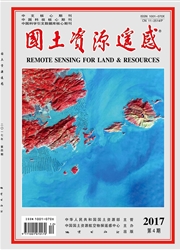

 中文摘要:
中文摘要:
为研究轻小型机载LiDAR的航线设计,以VUX-1型激光扫描仪为例,计算多周期回波(multi time around,MTA)对飞机作业高度的限制;根据要求的点云密度、扫描频率、扫描线速度等指标,依照航空摄影测量原理以及机载LiDAR数据获取规范,从中区别机载LiDAR与传统摄影测量学的不同,并借鉴机载LiDAR的数据采集方式与传统挂载专业相机的摄影测量的相似之处,判定在不同情形下激光的测距变化(例如测区内不同类型的目标反射率不同或大气能见度不同导致的最远测距能力的变化等); 在考虑以上问题基础上,对机载LiDAR系统进行航线设计;最后分别对比旁向点间距和航向点间距的误差,分析其原因并判定该航线设计方案的可行性。
 英文摘要:
英文摘要:
In this paper, the model VUX-1 laser was used as an example to calculate the influence of multitimearound(MTA) on the height of the aircraft. Then according to the requirements of the point cloud density, scanning frequency, scanning speed and other indicators, and in accordance with the principle of air aerial photogrammetry and LiDAR data acquisition specification, the difference between traditional photogrammetry and airborne LiDAR was distinguished, and a cue from traditional photogrammetry was used for reference. The changes of laser range under different conditions, such as the different types of targets in the test area,the different types of targets and the variation of the most remote ranging capability, were determined. By taking into account the above problems,a route for the airborne LiDAR system was designed. At last, the across track point spacing and the along track point spacing were calculated respectively for analyzing the reasons and determining the feasibility of the route design scheme.
 同期刊论文项目
同期刊论文项目
 同项目期刊论文
同项目期刊论文
 期刊信息
期刊信息
